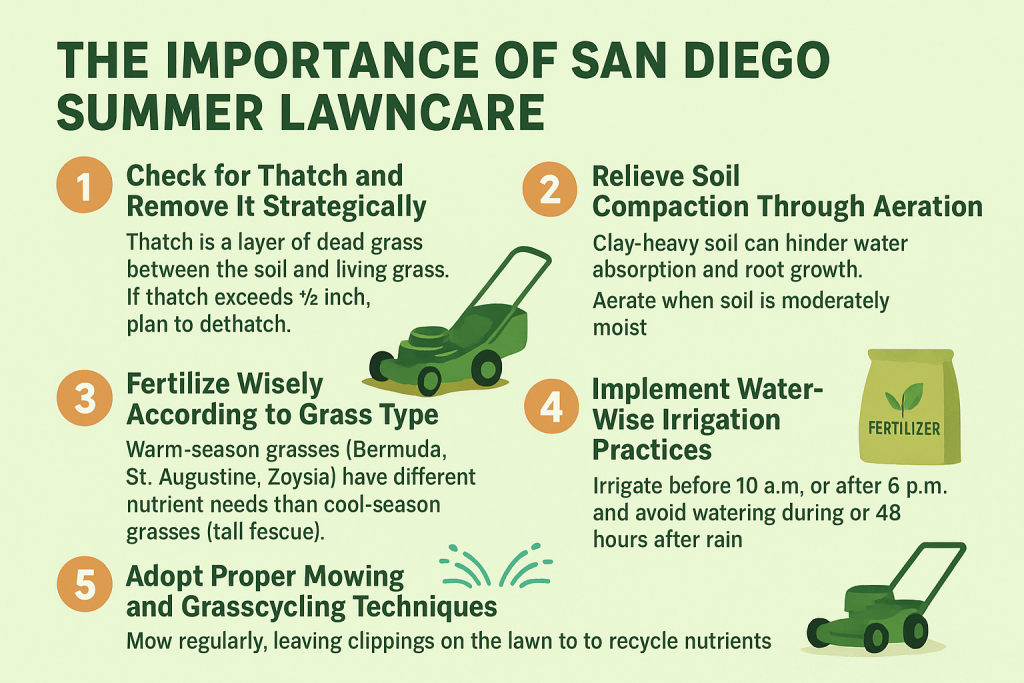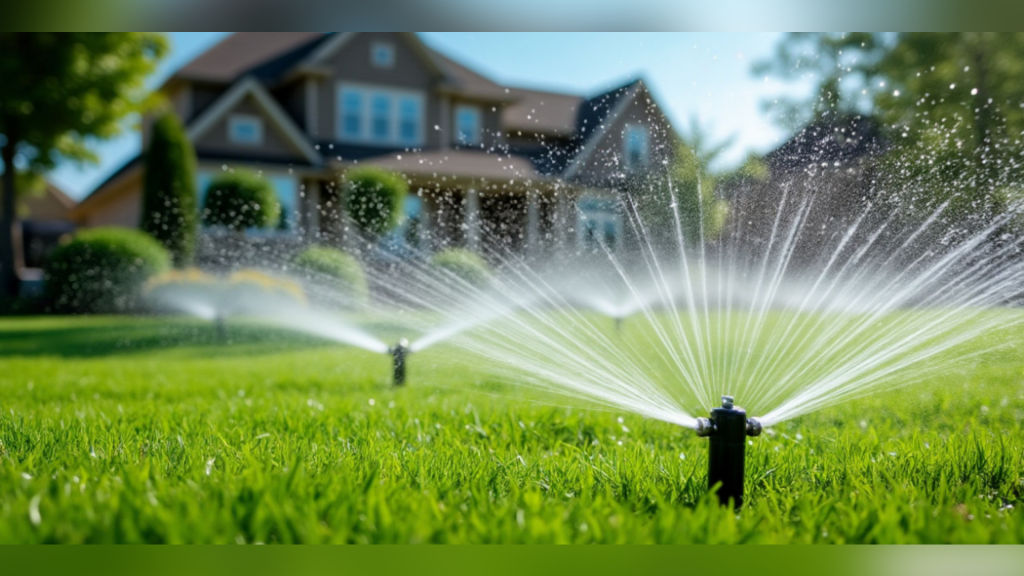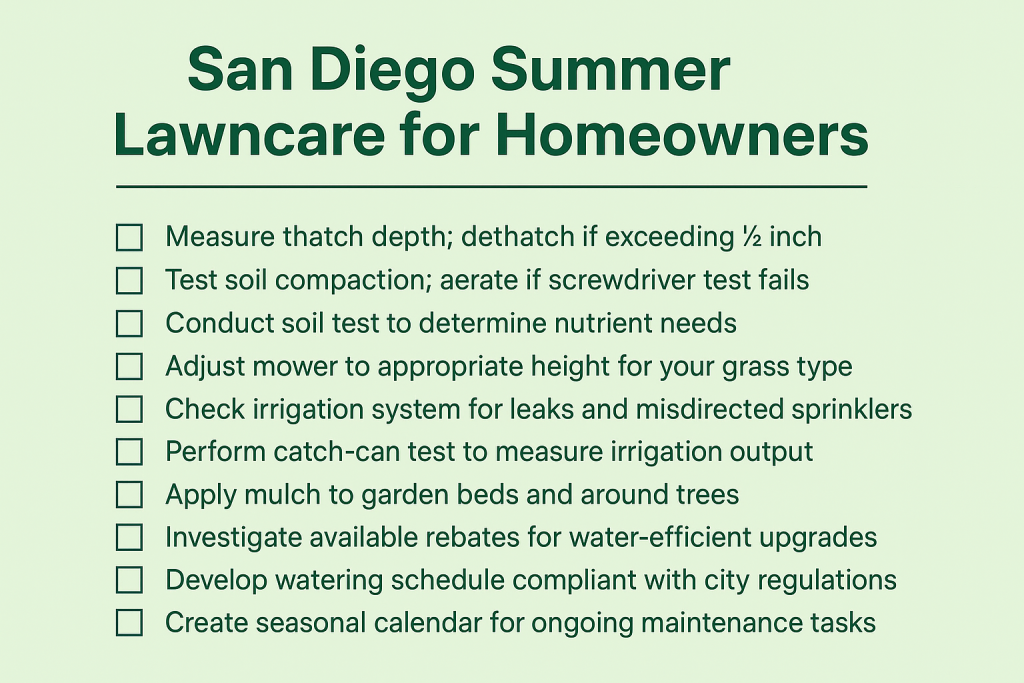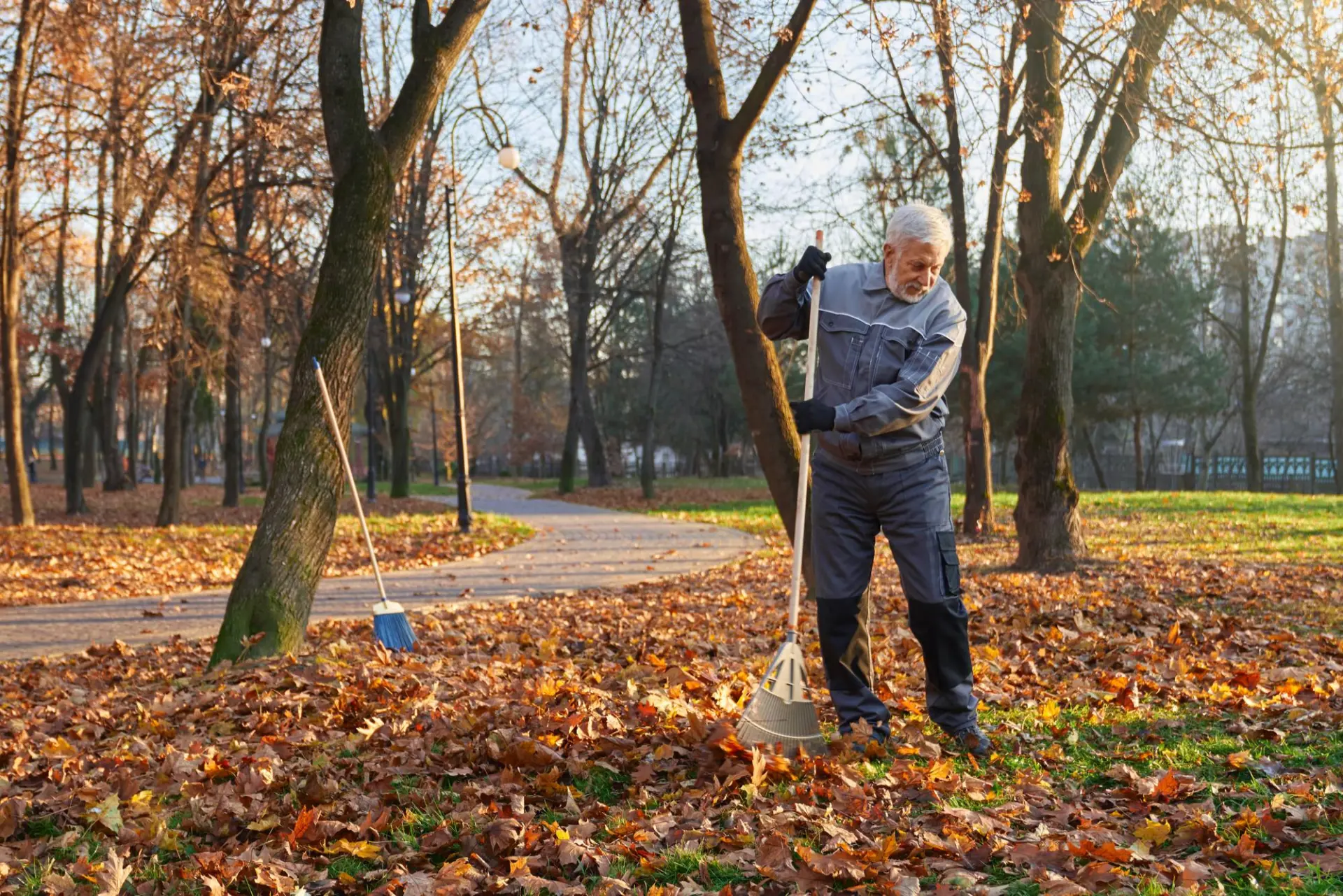The Importance of San Diego Summer Lawncare
Effective San Diego summer lawncare is crucial because the region’s unique climate presents specific challenges for homeowners. With average temperatures ranging from the mid-70s to mid-80s°F near the coast (and often into the 90s°F further inland), minimal rainfall, and the occasional dry Santa Ana winds, lawns face multiple stressors including drought conditions, increased water evaporation, and potential water restrictions.
The City of San Diego implements year-round water restrictions that limit irrigation to before 10 a.m. or after 6 p.m., with prohibitions on watering during and 48 hours after measurable rainfall. Additionally, many areas in San Diego have clay-heavy soil that compacts easily, reducing water absorption and root growth.
The good news is that with proper preparation, your lawn can not only survive but thrive during San Diego’s summer months. These five research-backed San Diego summer lawncare strategies will help you maintain a healthier lawn while conserving water and complying with local regulations. Implementing these strategies can also help you take advantage of various water conservation rebates offered through programs like SoCal Water$mart, which provides financial incentives for water-wise landscaping upgrades.

1. Check for Thatch and Remove It Strategically
Understanding Thatch Buildup
Thatch is a layer of dead grass stems, roots, and other organic matter that accumulates between the soil surface and living grass. While a thin layer (up to ½ inch) can provide insulation and protect roots, excessive thatch prevents water, air, and nutrients from reaching the soil. This is particularly problematic in San Diego’s climate where water conservation is crucial and drought tolerance is essential for lawn survival.
Proper Dethatching Techniques
- Assessment: Cut a small plug from your lawn with a trowel and measure the thatch layer. If it exceeds ½ inch, plan to dethatch.
- Timing: For warm-season grasses common in San Diego (Bermuda, St. Augustine, Zoysia), dethatch in late spring or early summer when growth is most active. For cool-season lawns like tall fescue, wait until late summer or early fall.
- Methods: For small lawns, use a dethatching rake (~$25-$50). For larger areas, rent a power dethatcher from a local equipment center.
- Aftercare: Water lightly after dethatching to help recovery, and consider applying a thin layer of compost to introduce beneficial microorganisms.
Thatch Management: Quick Guide for San Diego Lawns
- Bermuda: Thatch in late spring to early summer.
For recovery: Light watering; avoid fertilizing immediately after. - St. Augustine: Thatch in late spring.
For recovery: Monitor for weed intrusion; water deeply but infrequently. - Zoysia: Thatch in early summer.
For recovery: Apply compost tea to stimulate microbial activity. - Tall Fescue: Thatch in early fall.
For recovery: Overseed bare spots; water in early morning.
2. Relieve Soil Compaction Through Aeration
The Compaction Problem in San Diego Soils
Many areas of San Diego have clay-heavy soils that compact easily, especially in high-traffic areas. Compacted soil reduces water absorption, limits root growth, and creates favorable conditions for weeds. A simple test: push a 6-inch screwdriver into moist soil—if it won’t go down easily, your soil is likely compacted.
Effective Aeration Methods
- Core Aeration: This method removes small plugs of soil, creating air pockets that improve water infiltration, nutrient absorption, and root growth. Rent a core aerator from a local equipment center or hire a professional service.
- Timing: Aerate when the soil is moderately moist—not too dry and not saturated. Water your lawn 1-2 days before aerating for best results.
- Frequency: For high-traffic areas or heavy clay soils, aerate 1-2 times per year. For less compacted areas, once every other year may suffice.
- Alternative Options: For mild compaction, liquid aeration products can provide some relief, though they’re not as effective as mechanical aeration for severely compacted soil.
Pro Tip: Avoid aerating during extreme heat waves when your grass is already stressed. The ideal time is during moderate temperatures in late spring or early fall.
3. Fertilize Wisely According to Grass Type
Understanding San Diego’s Grass Varieties
San Diego lawns typically feature either warm-season grasses (Bermuda, St. Augustine, Zoysia) that thrive in heat, or cool-season grasses (tall fescue) that struggle during summer months. Each type has different nutrient requirements, especially during summer stress periods. For homeowners unsure of their grass type or how to identify its specific needs, a professional consultation can provide clarity and a tailored plan.
Smart Fertilization Strategies
- Warm-Season Grasses: Apply a slow-release fertilizer in late spring or early summer, but only after a soil test confirms nutrient needs. Aim for approximately 0.5–1 pound of actual nitrogen per 1,000 square feet per application.
- Cool-Season Grasses: Avoid summer fertilization entirely, as it can promote growth during stress periods and increase water demands. Instead, focus on fall feeding when growth resumes.
- Organic Options: Consider compost applications or grasscycling (leaving clippings on the lawn) to reduce synthetic fertilizer use. Grass clippings can supply up to 15-25% of your lawn’s annual nitrogen needs.
- Water Management: Always water lightly after applying fertilizer to prevent burn, and ensure applications comply with San Diego’s irrigation regulations (before 10 a.m. or after 6 p.m.).
Getting it right is crucial. The timing, type, and amount of fertilizer must be precisely calibrated for your specific lawn to avoid burn, wasted money, and environmental runoff. For San Diego homeowners seeking guaranteed results without the guesswork, professional lawn seeding and fertilization services can provide the expert application and tailored nutrient programs needed for a resilient, vibrant lawn.

4. Implement Water-Wise Irrigation Practices
Complying with San Diego Water Regulations
The City of San Diego has permanent mandatory water restrictions that directly impact lawn irrigation practices. These include:
- Irrigation limited to before 10 a.m. or after 6 p.m.
- Prohibition of irrigation that causes runoff onto adjacent properties or paved areas.
- No watering during or within 48 hours after measurable rainfall.
- Restrictions on washing paved surfaces without using a shutoff nozzle.
Efficient Watering Techniques
- Deep Watering: Lawns need about 1 inch of water per week (combined rainfall and irrigation). Water deeply but infrequently to encourage deeper root growth that can access subsurface moisture.
- Measurement: Use the catch-can test: place empty tuna cans around your lawn, run sprinklers for 15 minutes, and measure the water depth. Calculate how long it takes your system to deliver 1 inch of water.
- Smart Controllers: Upgrade to a weather-based irrigation controller (rebates available through SoCal Water$mart ) that automatically adjusts watering based on weather conditions.
- System Maintenance: Regularly check for and repair leaks, misdirected sprinklers, and other inefficiencies. A leaky faucet wasting one drip per second can waste over 3,000 gallons per year.
Maximize efficiency and compliance. Even small leaks and misaligned sprinkler heads can significantly waste water and increase your bill. For a system that is perfectly tuned to your lawn’s needs and the city’s regulations, consider professional irrigation services in San Diego to ensure optimal coverage, identify hidden leaks, and install smart technology that conserves water.
5. Adopt Proper Mowing and Grasscycling Techniques
Optimal Mowing Practices
- Height Matters: Taller grass shades soil, reduces evaporation, and helps outcompete weeds. Follow these height guidelines:
- Bermuda: 1-2 inches
- St. Augustine: 2.5-4 inches (3.5-4 inches for standard cultivars)
- Tall Fescue: 3-4 inches
- One-Third Rule: Never remove more than one-third of the grass blade at any single mowing session to avoid stressing the grass.
- Sharp Blades: Sharpen mower blades at least 1-2 times per season (or every 20-25 hours of mowing) to ensure clean cuts that heal faster.
- Timing: Mow during cooler parts of the day (evening or early morning) rather than during peak heat to reduce stress on the grass.
Benefits of Grasscycling
Grasscycling (leaving clippings on the lawn) provides multiple benefits :
- Returns nutrients to the soil, reducing fertilizer needs by 15-25%.
- Improves soil moisture retention.
- Reduces green waste sent to landfills.
- Saves time and effort compared to bagging clippings.
For successful grasscycling, ensure your mower blades are sharp, mow when the grass is dry to prevent clumping, and if clippings are too long, go over them a second time to distribute them evenly.
Consistency is key to lawn health. Maintaining the correct mowing height, schedule, and sharp equipment is one of the most impactful parts of lawn care, but it’s also one of the most time-consuming for homeowners. For a flawlessly manicured lawn that leverages these best practices without the weekend hassle, professional lawn mowing and maintenance in San Diego can provide the consistent, expert care your landscape deserves.
Bonus: Advanced Strategies for San Diego Lawns
Grub Prevention and Treatment
- Identification: Grub damage appears as brown patches that detach easily from the soil. In San Diego, common grubs include masked chafers and billbugs rather than Japanese beetles.
- Treatment: Apply beneficial nematodes (microscopic worms that target grubs) during early summer when grubs are small and near the surface. Avoid products containing “milky spore,” which specifically targets Japanese beetles (rare in California).
Smart Weed Management
- Prevention: Maintain a healthy, thick lawn through proper mowing, watering, and fertilization to outcompete weeds naturally.
- Mechanical Control: Hand-pull weeds when possible, especially after rain or watering when soil is soft.
- Spot Treatment: For persistent weeds, use targeted herbicides rather than blanket applications. Avoid relying on household vinegar, which may burn seedling weeds but won’t reliably kill established ones.
Drought Preparation Strategies
- Mulching: Apply a 2-3 inch layer of organic mulch around trees and garden beds to conserve moisture, improve soil quality, and reduce weeds.
- Native Plants: Consider replacing sections of lawn with California native plants that require minimal irrigation, little to no fertilizer, and provide habitat for local wildlife.
- Turf Replacement: Take advantage of the SoCal Water$mart Turf Replacement Rebate program, which offers $3 per square foot to replace lawn with California Friendly® plants, mulch, and/or rain capture features.
Implementing a Comprehensive Summer Lawn Care Plan
Effective San Diego summer lawncare requires a multifaceted approach that addresses the region’s unique climate challenges while complying with local water regulations. By following these five key steps—dethatching when needed, aerating compacted soil, fertilizing appropriately for your grass type, implementing water-wise irrigation, and adopting proper mowing techniques—you can maintain a healthier, more resilient lawn that requires less water and fewer inputs.
Remember that consistency is more important than perfection when it comes to lawn care. Regular maintenance throughout the season will yield better results than occasional intensive interventions. Take advantage of the many resources and rebates available to San Diego residents, including water-wise landscaping guides , free Water Use Surveys , and financial incentives for water-efficient upgrades.
For additional information on water conservation and landscaping best practices, visit the City of San Diego’s WaterSmart resources or contact the UC Master Gardener program of San Diego County. With proper preparation and ongoing care, your lawn can remain an attractive, functional outdoor space throughout San Diego’s challenging summer months.
Implementation Checklist: San Diego Summer Lawncare for Homeowners

References
- National Weather Service. (2023). San Diego Climate. National Oceanic and Atmospheric Administration (NOAA). Retrieved from https://www.weather.gov/sgx/
- City of San Diego. (2025). Water Use Restrictions. Public Utilities Department. Retrieved from https://www.sandiego.gov/public-utilities/sustainability/water-conservation/water-use-restrictions
- University of California Agriculture and Natural Resources (UC ANR). (2019). Lawn Care and Water Use. The California Garden Web. Retrieved from https://cagardenweb.ucanr.edu/
- Metropolitan Water District of Southern California. (2025). SoCal Water$mart Rebates. Retrieved from https://socalwatersmart.com/
- UC Statewide Integrated Pest Management Program (UC IPM). (2017). Thatch. Pest Notes. Retrieved from https://ipm.ucanr.edu/
- University of California Cooperative Extension – San Diego. (2025). Master Gardener Resources. Retrieved from https://www.mastergardenersd.org/
- UC ANR. (2018). Aerating Lawns. The California Garden Web. Retrieved from https://cagardenweb.ucanr.edu/
- UC IPM. (2018). Fertilizing Lawns. Pest Notes. Retrieved from https://ipm.ucanr.edu/
- City of San Diego. (2025). Water Conservation. Public Utilities Department. Retrieved from https://www.sandiego.gov/public-utilities/sustainability/water-conservation
- Environmental Protection Agency (EPA). (2023). WaterSense: Fix a Leak. Retrieved from https://www.epa.gov/watersense/fix-leak
- California Department of Resources Recycling and Recovery (CalRecycle). (2022). Grasscycling. Retrieved from https://calrecycle.ca.gov/Organics/HomeCompost/Grasscycling/
- UC Master Gardeners of San Diego County. (2025). Water-Wise Gardening. Retrieved from https://www.mastergardenersd.org/
- UC ANR. (2017). Lawn Alternatives. The California Garden Web. Retrieved from https://cagardenweb.ucanr.edu/
- Metropolitan Water District of Southern California. (2025). Turf Replacement Rebate. SoCal Water$mart. Retrieved from https://socalwatersmart.com/
- City of San Diego. (2025). Water Conservation Programs. Public Utilities Department. Retrieved from https://www.sandiego.gov/public-utilities/sustainability/water-conservation
- University of California Cooperative Extension. (2025). UC Master Gardener Program of San Diego County. Retrieved from https://ucanr.edu/site/uc-master-gardener-program-san-diego-county



